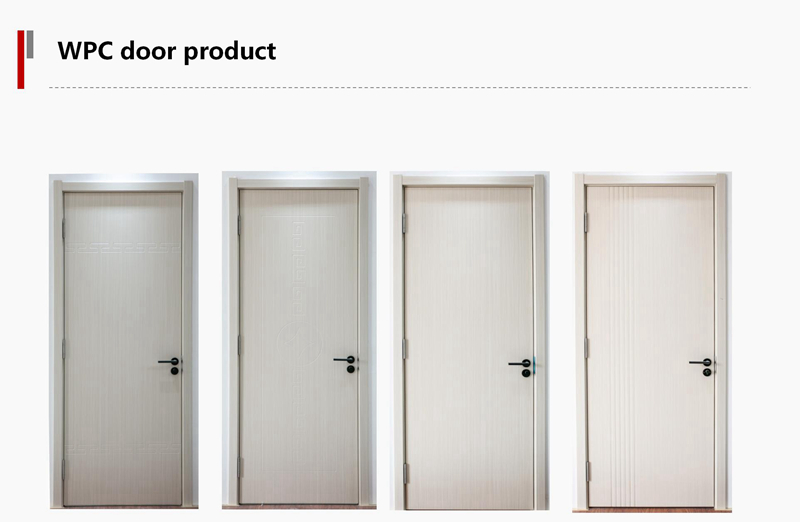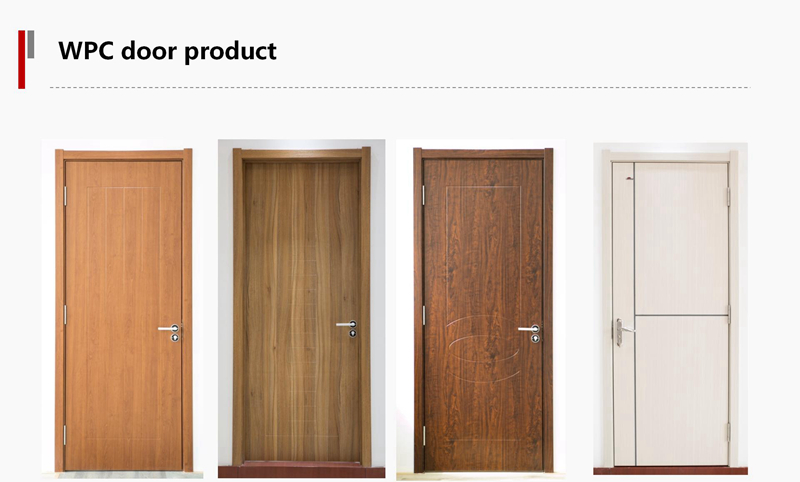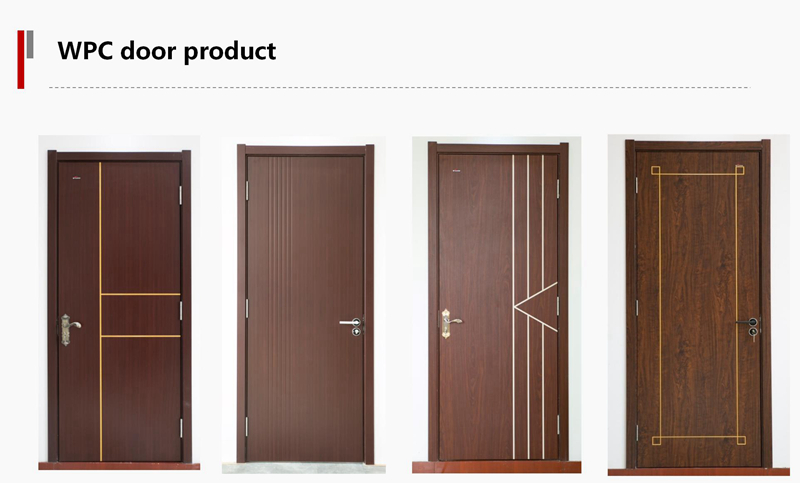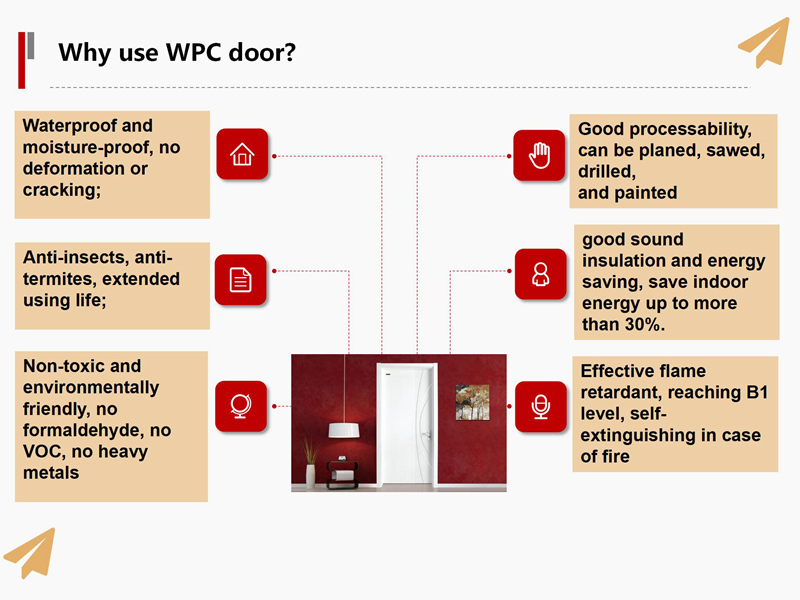What are the surface treatment methods for WPC doors?
Sure is professional manufacturer for WPC door production turnkey plant. There are several main post-processing methods for the surface of wood-plastic WPC door panels:
Sanding treatment: Use sandpaper or sanding machine to polish the surface of wood-plastic door panels to remove surface defects, unevenness and excess burrs, etc., so that the surface is smoother and flatter. This can not only improve the appearance quality of the door panels, but also lay a good foundation for subsequent surface treatment steps. For example, during the sanding process, the tiny bumps and depressions generated during extrusion molding can be smoothed.
Printing technology:
Screen printing: Printing ink on the surface of wood-plastic door panels through screen printing can achieve the printing of various patterns, texts and logos. The patterns printed by this method have high clarity and bright colors, which is suitable for small batch and multi-variety production.
Inkjet printing: Using an inkjet printer to spray ink on the surface of the door panel can achieve high-precision pattern printing, and the printing content can be changed at any time as needed. Inkjet printing has a high color richness and is suitable for the production of personalized customized wood-plastic door panels.

Laminating treatment: Cover the surface of the wood-plastic door panel with a layer of plastic film, such as PVC film, PP film, etc. Lamination can protect the surface of the door panel, increase wear resistance, corrosion resistance and waterproofness, and also change the appearance color and texture of the door panel. For example, lamination can make the wood-plastic door panel present the texture and color of various woods, such as walnut, oak, etc.
Thermal transfer technology: first print the pattern or texture on the transfer paper, and then transfer the pattern on the transfer paper to the surface of the wood-plastic door panel by heating and pressurizing. Thermal transfer can achieve realistic patterns and texture effects, such as imitation wood grain, imitation stone grain, etc., making the wood-plastic door panel more decorative.

UV curing treatment: Use UV ink to coat the surface of the wood-plastic door panel, and then cure it quickly by ultraviolet irradiation. The surface after UV curing has the advantages of high hardness, good wear resistance, strong chemical corrosion resistance, etc., and has a fast curing speed and high production efficiency.
Baking varnish treatment: Spray a layer of paint on the surface of the wood-plastic door panel, and then cure it at high temperature to form a hard and smooth paint film. The paint treatment can make the surface of the wood-plastic door panel have good gloss and texture, and also improve its wear resistance and corrosion resistance. However, the paint process requires high temperature and professional equipment, and the cost is relatively high.
Finishing treatment: Use paint to paint the surface of the wood-plastic door panel. You can choose water-based paint, oil-based paint or powder paint. The finishing treatment can change the color and appearance of the door panel, and it can also play a certain protective role. Before finishing, the surface of the door panel needs to be cleaned and pre-treated to ensure the adhesion of the paint.

